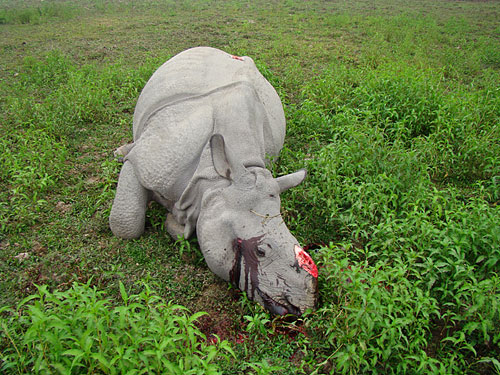Hunting remains one of the major conservation threats across the world, particularly in tropical countries. Nandini Velho, Krithi K. Karanth and William F. Laurance analyze hunting studies from India. These are the highlights of their study from their paper published in the journal, Biological Conservation.
- The authors did a meta-analysis of 143 published studies on hunting in India.
- 114 mammal species are hunted across India and large bodied species are the most vulnerable.
- A majority (76%) of studies focused on mammals but did not quantify hunting impacts.
- Eastern-Himalaya and Indo-Myanmar regions are the most vulnerable.
- Quantitative studies on hunting are needed on different species across India.
Methods
The studies were compiled based on Web of Knowledge search and grouped into categories (studies on socio-economic and biological drivers of hunting, abundance or distribution of species linked to hunting, genetic and molecular studies to identify hunting, and other studies referring to hunting).
The Results
- 143 studies were compiled with 127 reporting hunting of individual taxa. Only 6% actually quantified hunting and 44% were qualitative studies.
- Studies were from 23 states and 7 union territories.
- Genetic and molecular studies comprised 9% but were focused on one-horned rhino, Asian elephant, large felids, mongoose species and crocodile species.
- Most (76%) studies were focused on mammals and 20% on birds. 114 species of mammals were identified.
- Reasons for hunting include for food and cultural reasons. Common methods include guns and snares.
- Hunting has negative impacts on both behavior and abundance of species. For example, excessive hunting of male elephants in Periyar resulted in a skewed sex ratio of 1 male to 101 females in a 20-year period.
- Hunting has affected game and water birds, including large bodied birds such as hornbills and the Great Indian Bustard.
- 94 species are hunted in the Eastern Himalaya and Indo-Myanmar complex compared to 33 species in the Western Ghats.
More work to be done on hunting
As a mega-diversity country, India has many species that are seriously threatened with extinction, particularly large mammals, and this appears to be higher in the Northeast. Although many Indian species that are protected by the Wildlife Protection Act are on the IUCN Red List, recently discovered and hunted species such as the leaf goral and Arunachal macaque are still missing from the Red List. Quantitative estimates of hunting are urgently needed and should be expanded to other taxonomic groups. Broader impacts on plant-animal interactions also need to be evaluated in conjunction with hunting studies. Human dependence on wild meat will continue to be a detriment to already decimated Indian wildlife and requires serious efforts to protect species and encourage a shift to alternate sources of domestic protein.
See full article on ScienceDirect.


 CI is a non-profit, non-commercial portal that aims to facilitate wildlife and nature conservation by providing reliable information and the tools needed to campaign effectively.
CI is a non-profit, non-commercial portal that aims to facilitate wildlife and nature conservation by providing reliable information and the tools needed to campaign effectively.